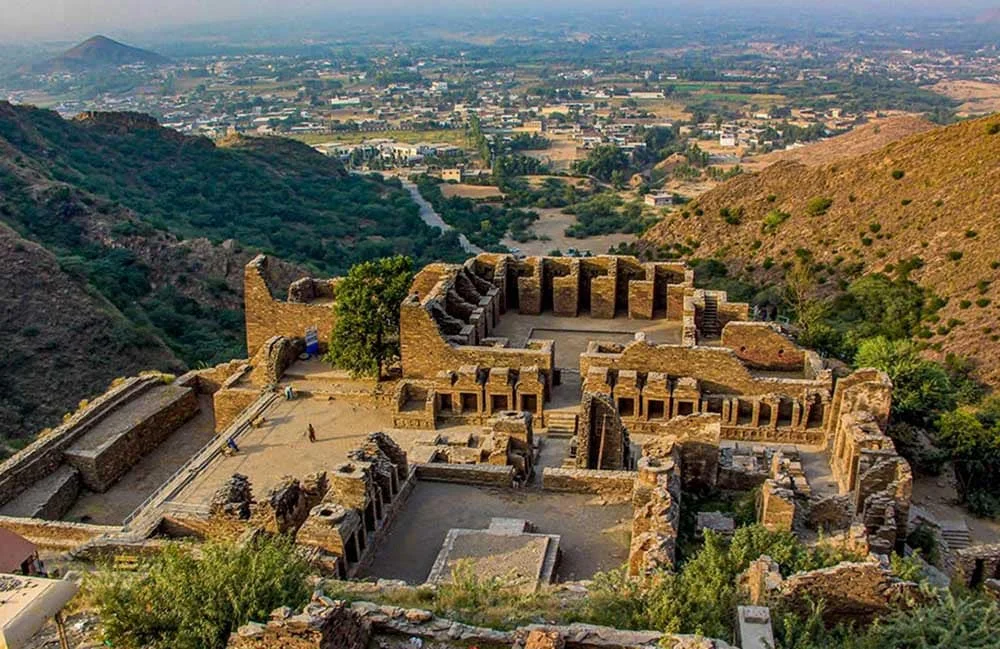A Complete Guide to Exploring the Gandhara Civilization in Pakistan
Introduction
The Gandhara Civilization, nestled in the heart of present-day Pakistan, represents one of the most influential chapters in Buddhist and ancient world history. Flourishing between the 1st century BCE and the 7th century CE, Gandhara was a melting pot of Greek, Persian, and Indian influences, creating a unique cultural and artistic legacy. Known for its Buddhist monasteries, stupas, and exquisite Gandharan art, this civilization left an indelible mark on South Asia and Central Asia.
Whether you're a history enthusiast, an adventurer, or simply curious about Pakistan's ancient past, exploring Gandhara's archaeological wonders promises a journey through time. This guide will help you uncover the historical significance, key attractions, and practical details to make the most of your visit.
Historical Overview of Gandhara Civilization
Gandhara was situated in the region encompassing present-day Peshawar, Swat Valley, Taxila, and parts of Afghanistan. Its strategic location along the Silk Road made it a hub for trade, cultural exchange, and the dissemination of Buddhism. The civilization reached its zenith during the Kushan Empire, especially under Emperor Kanishka, who played a pivotal role in promoting Buddhism.

Key Features of Gandhara Civilization:
- Gandharan Art: Known for its fusion of Greek and Indian artistic styles, Gandharan art is renowned for its intricate sculptures, reliefs, and depictions of Buddha.
- Religious Influence: The region became a major center for Buddhist teachings, attracting monks and scholars from across Asia.
- Architectural Marvels: Gandhara's stupas, monasteries, and university-like centers reflect its architectural brilliance and spiritual significance.
Top Gandhara Sites to Visit
Taxila:
A UNESCO World Heritage Site, Taxila is a treasure trove of Buddhist heritage. It features numerous stupas, monasteries, and ancient cities that showcase the brilliance of Gandharan architecture and culture.
- Must-Visit Attractions in Taxila:
- Dharmarajika Stupa: A significant Buddhist relic site.
- Sirkap: An ancient city showcasing Greek-inspired urban planning.
- Jaulian Monastery: A well-preserved monastic complex with ancient inscriptions.
- Pro Tip: Hire a knowledgeable guide or join a tour operator to understand the historical context.
- Entrance Fee: PKR 500 for locals, PKR 1500 for foreigners.
Takht-e-Bahi:
Located near Mardan, this Buddhist monastery complex is another UNESCO World Heritage Site. Perched on a hill, Takht-e-Bahi offers panoramic views and an immersive glimpse into monastic life.
- Highlights:
- Stupas, monk cells, and meditation halls.
- Gandharan art and relief sculptures.
- Best Time to Visit: October to March for cooler weather.
- Drone Usage: Prohibited without prior approval from local authorities (DC or AC office).
Swat Valley:
Often referred to as the "Switzerland of Pakistan," Swat Valley is also home to numerous Gandharan sites.
- Key Sites:
- Butkara Stupa: One of the earliest Buddhist stupas.
- Saidu Sharif Museum: Showcasing artifacts from Gandharan civilization. Udegram Buddhist Monastery.
- Travel Tip: Swat Valley is accessible throughout the year, but October to March offers the most pleasant weather.
Peshawar Museum:
This museum houses one of the largest collections of Gandharan art, including statues of Buddha, panels, and relics.
- Visitor Information: Open from 9 AM to 4 PM, except on public holidays
Practical Tips for Visiting Gandhara Sites
1. Accessibility:
Gandhara sites are accessible throughout the year, but October to March is ideal for comfortable travel due to the cooler climate.
2. Entry Tickets:
Most sites require an entry fee. For example:
- Taxila: PKR 500 for locals, PKR 1500 for foreigners.
- Takht-e-Bahi: Similar ticket structure applies. Carry cash as electronic payment options may not be available at all locations. An ancient city showcasing Greek-inspired urban planning.
3. Guided Tours:
Hiring a guide or traveling with a reputable tour operator like Crossroads Adventure enhances the experience by providing historical insights and seamless logistics.
4. Drone Camera Usage:
Drone cameras are prohibited unless prior approval is obtained from the relevant authorities (DC or AC office). Apply well in advance to avoid complications.
5. Cultural Sensitivity:
Be respectful of local traditions and privacy. Always seek permission before photographing local residents or their homes. Modest attire is appreciated at religious and archaeological sites.
6. Travel Essentials:
- Wear comfortable shoes suitable for walking and hiking.
- Carry water, sunscreen, and a hat for outdoor exploration.
- Ensure your camera or phone is fully charged for capturing memories.
Why Choose Crossroads Adventure for Your Gandhara Journey?
Crossroads Adventure specializes in curated tours across Pakistan, including Gandhara's historical sites. With experienced guides, personalized itineraries, and exceptional service, we ensure an enriching and hassle-free travel experience.
What We Offer:
Expert-guided tours to Taxila, Takht-e-Bahi, Swat, and more.
Comfortable transport and accommodation options.
Assistance with permits, including drone approvals.
In-depth insights into Gandharan history and culture.
Conclusion
The Gandhara Civilization offers a fascinating journey into ancient Buddhist history, art, and culture. From the majestic stupas of Taxila to the serene monasteries of Takht-e-Bahi, exploring these sites is an unforgettable experience for history buffs, adventurers, and cultural explorers alike. Plan your trip with Crossroads Adventure to discover the timeless treasures of Gandhara with ease and expertise.
Visit our website at Crossroads Adventure to plan your journey through the wonders of Gandhara Civilization.
Hashtags
#GandharaCivilization #ExplorePakistan #BuddhistHeritage #AncientHistory #CulturalTravel #CrossroadsAdventure #Taxila #TakhtEBahi #SwatValley #ArchaeologicalSites
